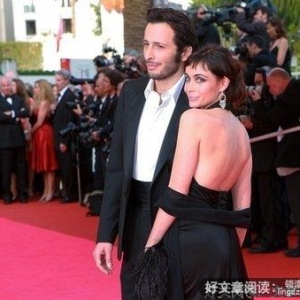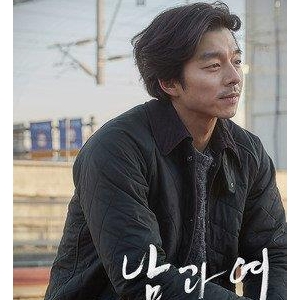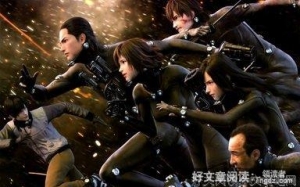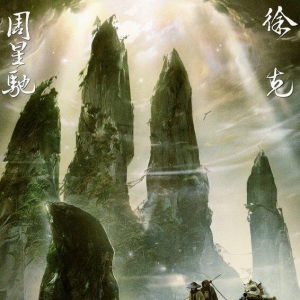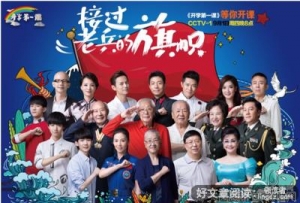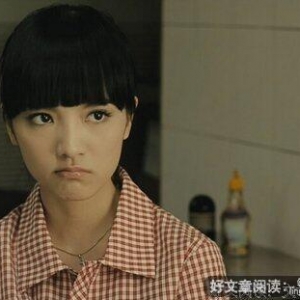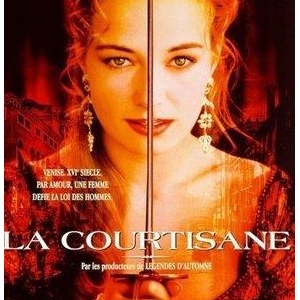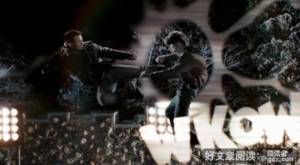
《十月》是一部由格里高利·亚历山德罗夫 / 谢尔盖·爱森斯坦执导,Nikolay Popov / Vasili Nikandrov / Layaschenko主演的一部剧情 / 历史类型的电影,特精心从网络上整理的一些观众的影评,希望对大家能有帮助。
《十月》影评(一):十月 教材汇编
认识电影272页 爱森斯坦在冬宫做好几个月陈设 电影景象是巴洛克式 结构丰富形式复杂 只要人工的(形式主义的)效果 认识电影362页 全片宣传意味十足 对未来充满希望 也把沙皇过去统治时期鄙称为黑暗时代 意识形态粗劣明显 辩证剪辑风格制作的并列影像出奇美丽 电影艺术69页实验电影 电影艺术98页 情节可以利用银幕长度延长故事长度 本片利用剪辑技术延长短时间发生的事件
电影艺术224页 倾斜镜头并不是表示脱序的世界 反而增加了推进大炮的动力感
电影艺术269页 重复好几次桥座升起的镜头 来强调此刻的重要性 重叠剪辑
电影艺术297页 不连续性剪辑的功能:十月
电影艺术355页 其他影片会用非比寻常的技术呈现画面 若要了解它 我们必须用这些陌生技巧来构组在新风格上的期待 比如本片中的不连续性剪辑手法
电影艺术356页 显著技巧 很可能就是影片中大量运用的技术 本片中的快速剪辑 都引发观众注意去进一步留心观察
电影艺术358页 分析者必须找出风格在影片整体形式中所扮演的角色 不连续剪辑是不是像我们曾分析过的《十月》一样 是为了产生叙事上的全知观点?
《十月》影评(二):尼克·布朗眼中的《十月》
对“大桥升起”段落的详解:
在我看来,这个段落表现了一种非同寻常的时间延伸,尤其是大桥开启的顷刻。这个段落是以重复和在时间上的拉长这一特定时刻为主要内容的。它的构成原则是把两个微型事件交叉剪辑在一起,中间插入一个比喻作为过渡。
两个事件是大桥升起和一位布尔什维克为抢救红旗而牺牲。大桥升起时,我们看到一个戏剧性的比喻:一个女人,更确切的说是这个女人的头发耷拉在桥缝上,同时还有一匹马在靠近大桥分开处的地方坠入河中。这样,爱森斯坦便在马和妇女之间造成一种象征的同一性,从而分解了叙事的刻板结构。
另一条叙事线索——抢救共产党的旗帜和那位布尔什维克死于一群妇女和老人之手——的插入,使大桥升起的象征意义和拯救发生了联系。这种攻击性的结构描写了资产阶级与无产阶级的阶级关系,证明资产阶级是衰老的和娇弱的。
该段落的高潮——坠马、抛旗和《真理报》的“淹没”的交叉剪辑——集中出现在一组将两条处于虽不同但相近的空间中的叙事线索穿插在一起的镜头里。在战马坠下和它溅起的浪花之后,紧接着切入淹没那位布尔什维克的水浪。形成一种交叉剪辑造成的深一层联系。但剪辑点不是动作的相似,而是两者的对比所暗示的涵义。这一意识形态性的比喻意味着什么?
——尼克·布朗《电影理论史评》
《十月》影评(三):蒙太奇
俄国早期的蒙太奇是电影史上极出名的,蒙太奇分为故事形式的蒙太奇和剪辑的蒙太奇。其中做得最好与最出名的莫过于爱森斯坦,他的代表作“战舰波将金号”和“十月”就是极好的例子。
作为电影人,爱森斯坦是极其讨厌传统那些剧情片的叙事模式,他的观念是让镜头组接以达到视觉的震撼,所以他的片子大多数剪辑都是非逻辑性的。在我看来,爱森斯坦的电影可以概括为“宏观的逻辑性与剪辑的非逻辑性”。基于个人偏好原因,我也是很喜欢这样的概念,而不喜欢泛滥的连续性的剧情片。
“十月”运用非逻辑性剪辑非常精妙,把不相关的两个画面剪接在一处,目的是想形成对比、类比或者象征。像影片中用拿破仑的雕像来象征临时政府的独裁,用沙皇的雕像来象征人心涣散以及不得人心等等。影片把几个片段组接在一起,形成了宏观的叙事性,推动影片往最后革命的结果前进。这样的剪辑方式可以很震撼,也很有趣,但需要推敲,不适合普通的人看。
在看这样类型的电影时必须放下成见,不能因为主题的缘故而忽视了它其他方面的艺术成就。飞逻辑性剪辑是脱离传统连续性剪辑的一种新的电影模式,很多艺术片都有这个特点。在剧情片泛滥的年代,所有人都在寻找叙事方式的新颖,却不曾像爱森斯坦那样脱离传统开辟自己的新途。
总的来说,十月的突出之处在于剪辑,要想很好的了解爱森斯坦的片子,一定要注意每个连接的画面,可以暂停去想象它们之间的联系。
《十月》影评(四):关于《十月》的不连续性剪辑及其背景
(本文摘选自《电影艺术:形式与风格》。摘取这一小段的目的是为了使我和一些普通观众能够大致了解本片的背景,以及应该从何种角度观赏本片。)
在20世纪20年代,对多数的苏联导演而言,剪辑是组织影片形式的主要方法,它的作用不只是在连续性系统中加强故事的发展。爱森斯坦早期的影片——《罢工》、《战舰波将金》、《十月》、《旧与新》(Old and New),无不尝试以某些剪辑手法来组构一部影片。爱森斯坦不愿让剪辑技巧屈就于叙事,反而视影片为剪辑的产物。
爱森斯坦反对连续性剪辑,而寻求并开发好莱坞所谓的不连续性剪辑;他经常通过设计、拍摄和剪辑,以期在镜头及场次间制造最大的冲击(collision)。因为他相信,只有这种冲突的处理方式可使观众也参与理解影片的过程。
爱森斯坦不愿受制于传统的戏剧束缚,因此他的电影自由游走于时空之间,形成的影像模式旨在刺激观众的感官、情绪及思想。在此以《十月》中的一个片段,简短地说明爱森斯坦如何运用不连续性的剪辑法。
总之,爱森斯坦的空间剪辑,也如同他的时间、图形剪辑,旨在形成相互关系、模拟及对照,进而诠释事件的涵义。这层诠释并非以告知方式传递给观众,而是在不连续性的剪辑中,迫使观众推敲出其中的关联。这个片段以及《十月》的其他部分,都显示除了传统的连续性剪辑法外,还有其他强有力的处理手法。
:观赏20世纪30年代和20世纪40年代的美国电影,可让你熟悉传统连续性剪辑手法,试着预测接下来会是什么样的镜头(你会惊讶于你的命中率)。如果你看的是录象带,试着把声音关掉,这样你会更容易注意到剪辑的手法;若看到违反连贯性的镜头,要思考其目的;若看到不遵循传统剪辑手法的电影,找出其特殊的剪辑模式。如果有可能,利用录像机或DVD上的慢动作、静止和倒转等功能,仔细分析影片的每一场戏。(这对所有影片都奏效。)如此一来,你对剪辑的观察力及理解力势必大增。
《十月》影评(五):【391】《十月》——鲸鱼推荐872部好电影
《十月》 Октябрь 年代:1928年 / 国家:苏联 / 导演:格里高利·亚历山德罗夫、谢尔盖·爱森斯坦 / 主演:鲍里斯·里瓦诺夫、爱德华·德斯
聊到这部电影时你可以谈论以下话题
1、苏维埃政权的建立!
十月革命对于世界社会主义运动来说是划时代的胜利,这样的丰功伟绩自然要在电影为其歌功颂德一番。《十月》这部电影名符其实,讲的就是那段风云诡谲的史实。二月革命后沙皇的统治被推翻,而临时政府妄图“继续履行对于联军的忠诚”,使百姓陷入窘迫的生活境地。一个伟大的人物——列宁为俄国人民指明了方向。经过了周密的准备,以及和孟什维克的论战,阿芙乐尔号对冬宫的一声炮响,拉开了十月革命的序幕,最终布尔什维克的红旗飘荡在苏联上空,历史进入了新的篇章。
2、爱森斯坦的杂耍蒙太奇!
当年列宁看了美国导演格里菲斯的《党同伐异》后,号召全苏联电影界钻研蒙太奇。爱森斯坦就凭借《战舰波将金号》为电影史树立了一块里程碑。不过《十月》名气虽不如《战》,但仍然有许多经典蒙太奇手法,比如他将科伦斯基和骄傲的孔雀和拿破仑的雕塑剪辑在一起,讽刺了这个骄奢意淫的独裁者。瓦解沙皇雕像的场景也从多个角度进行表现,直观呈现了二月革命的光辉成果。尽管当时为意识形态宣传贡献良多,但这些处理手法用现在的角度来看会感觉十分生硬和强制,不亚于一种视觉专治,人们与其多看一些细节刻画,也不愿把两个毫不相干的东西剪辑在一起,这也是《十月》本身的历史局限性所导致的。
全片最精彩的部分是这两处
亮点1
第14分钟,临时政府镇压游行队伍,使得大街上人们四散逃开。为了表现反动派的猖獗和残忍,导演把一个正在开火的机枪和一个丧心病狂的临时政府军人的嘴脸,以极快的速度交叉剪辑在一起,造成了一种机关枪和人脸相重叠的效果,非常具有震撼力。
亮点2
第17分钟,临时政府将连接工人区和市中心的大桥从中间升起,这是在桥上那个被打死的长发姑娘、一批脱了缰活活累死的马,以及很多被打死的男子的尸体随着大桥缓缓抬升,然后落入水中,这些意象都象征了被残酷镇压的百姓,更是对临时政府反动本质的控诉。
加我微信jingyurizhi
今日头条:鲸鱼电影
《十月》影评(六):转载Sperber细读爱森斯坦《十月》,逐个镜头解读爱氏的镜头语言
《十月》是爱森斯坦使用蒙太奇最有试验性和创造力的电影之一。尽管著名镜头很多,但是其中意象繁多,结构复杂,非电影专业的同学们(比如我)很容易看着看着就抓瞎了。这篇文章是Murray Sperber1977年发表于Jump Cut杂志上的,是细读《十月》的评论文章里比较早也比较有名的一篇。不知是否有中文译介。我全文转来,贴在这里,希望对大家有一些帮助和启发。全文英文,每一段我用中文大致标注了一下我觉得比较重要的点。
erber的主要论点是,爱森斯坦在《十月》中,全片贯彻了他的马克思主义思想:
1 艺术与其还原历史细节的真实,不如说是展现辩证历史的真实,而辩证历史的真实则是导演通过对于历史的理解而把握的历史与政治的核心;
2 辩证历史是通过矛盾冲突与辩证发展来体现的,具体说来就是“正题-反题-合题”这样的进展,在具体的历史情境中,两种相互对立的力量可以视为正题与反题,两者的冲突必将导致一个新的结果,而这个新的结果又将遇到自己的反题,在此逻辑中不断的发展下去(所谓螺旋上升,即绕了一圈后回到了出发点,但是更高,再绕,再更高);
3 艺术即冲突,蒙太奇是用来表现冲突的艺术工具。
JUMP CUT:A REVIEW OF CONTEMPORARY MEDIA
Eisenstein’s October
y Murray Sperber
from Jump Cut, no. 14, 1977, pp. 15-22
copyright Jump Cut: A Review of Contemporary Media, 1977, 2004
INTRODUCTION
ergei Eisenstein, in the first decade of the Soviet Union and his own first decade in the cinema, was deeply committed to Marxism. This fact, so obvious in Eisenstein’s films of the 1920s, is denied or distorted by most critics of his work.
oliticos often attack or apologize for him in “vulgar Marxist” or “vulgar Free World” terms: e.g., the Stalinist and American Legion charges against him during his lifetime (OCTOBER was considered particularly “deviationist” and “subversive”), and the Soviet Union’s veneration of him in safe death. The majority of writers, including many of the luminaries of film criticism, evaluate Eisenstein mainly for his technical achievements and failures, and his place in film history. That he happened to make movies about political revolution appears in their eyes inconsequential compared to his innovations in film direction and editing.
This aesthete position gained momentum in the West during the Cold War when the safest way to discuss film—or any art—was in formalist terms. And when film came to the academy, film teachers and historians, codifying and clubifying their language and discipline also felt most comfortable discussing the director out of political context and in terms of a mystified film history: e.g., partially influenced by Griffith but little impact upon Hitchcock, etc..
西方对于爱森斯坦的解读多是通过美学角度(时值冷战)。
The study of actual history is difficult and the more distant and foreign the period—e.g., the Soviet 1920s—the greater the problems. Also, an idealist approach to film (film as an art object) is generally easier than a materialist one (what actually occurred and why). Thus aesthetic criticism of Eisenstein continues. But denying an artist’s political content is a highly political albeit conservative act. If Eisenstein’s films are art objects, then we can ignore his political—i.e. Marxist—messages. Although in the last half century a number of critics, mainly French, have inquired into the connections between politics and art in his work, their impact upon film criticism, especially British and U.S., has been negligible. (For the best of the French writing, see the special double issue of Cahiers du Cinema, Jan.-Feb., 1971.) The purpose of this essay, therefore, is not to add to the existing criticism on Eisenstein but to shift the discussion, to consider him in terms of his Marxism. Here I will try to understand his use of dialectical materialism and to evaluate whether and how he translated it into cinema. Only in this way do Eisenstein’s triumphs, as well as his failures, become intelligible.
而爱森斯坦的电影中的政治信息是非常重要的。法国有人研究。
THE CRITICISM OF OCTOBER
对于《十月》的批评
art of the problem for Western critics and viewers is that the subject of Eisenstein’s OCTOBER—the 1917 Russian Revolution—is unfamiliar. Furthermore, the print of the film they see is butchered and far from the director’s intention. In foreign distribution, especially in the United States, the film was cut and even censored in various ways. The usual Western version is both distorted and at least 1,200 meters shorter than the original Moscow print. Even the usual title, TEN DAYS THAT SHOOK THE WORLD, is incorrect: Eisenstein always called his work OCTOBER. The German distributor renamed it TEN DAYS THAT SHOOK THE WORLD after John Reed’s famous eyewitness account of the Revolution, which was one of Eisenstein’s many sources.
美国放映的《十月》有所删减(后文提到主要是关于宗教的一段)。
In discussing the film, it is important to use the best print available in the West. This is the French S.N.A. version, the closest to the original Moscow print. And to help the reader understand the action better, to retrieve the past, in a sense, it is useful to provide ongoing identifications of the historical persons and events. Although cumbersome at times, this positivist approach supplies the facts of the film, facts upon which any understanding and comment should be—but have not been—based.
OCTOBER has always been a problem film, for Eisenstein, his viewers, and especially critics. From its premiere, the film has served more as a Rorschach for critics’ projections than as a work seen and understood in its own terms. Mordaunt Hall, the reviewer for the New York Times, found it
“clever, but a bore. It is kaleidoscopic... His masters, the Soviet, get their due.”
Then, in complete disregard of the images of the screen, he states:
“Mr. Eisenstein revels in showing the pillaging of Bolshevik troops as they found their hobnailed boots for the first time on the waxed floors of a palace” (Nov. 3, 1928, p. 24).
Even critics predisposed in favor of the Soviet Union and its cinema complain of the film’s “rococo discursiveness and its lack of organized dramatic development” (Alexander Bakshy, The Nation, Dec. 28, 1928, p. 721). Another maintains,
“OCTOBER has no central slant. It is built up out of a collection of what might be called imaginary news reels. It darts about Russia, rushes through time, skips whole pages of history to fasten its frenzied eye in turn on ... etc” (Robert Littell, The New Republic, Nov. 21, 1928, p. 17).
The standard critical line on OCTOBER was soon established:
“The film as a whole is difficult and incoherent” (William Hunter, Scrutiny of Cinema, Lawrence and Wishart, London, 1932, p. 31).
Critics, especially in the United States, did have the problem of seeing butchered versions of the film. Nevertheless, one suspects that even if they had viewed the original Moscow print, they probably would not have understood the film any better.
The problem for most critics is that they have been unwilling or unable to see the film in dialectical terms. Eisenstein described OCTOBER as “the first embryonic step towards a totally new form of film expression.” He called this form the “intellectual film,” and he based its methodology on his interpretation of Marxism (Film Form, New York, 1949, p. 63).
大部分影评人认为《十月》不够连贯,不够具有故事性。
To analyze Eisenstein’s OCTOBER, we must first understand his theoretical premises and then examine whether he was able to render them cinematically. If we apply Western film values and sit passively in the dark, regarding OCTOBER as simply another sequence of moving celluloid, we watch the movie through a distorted lens. If we gain entrance to the world of OCTOBER, its political and cinematic meanings, we begin to see Eisenstein’s work, walk around its filmscape. participate in it, and achieve a new and richer understanding.
EISENSTEIN'S FILM THEORY AND HIS PLANS FOR OCTOBER
爱森斯坦的电影理论和他对于《十月》的计划
Eisenstein not only made movies but he wrote about the cinema in a detailed and original manner. In one of his most important essays, “A Dialectical Approach to Film Form,” written one year after completing OCTOBER, he tried to explain his sense of dialectical materialism and its application to film (his main example was OCTOBER). Eisenstein began by stating:
“The foundation of this philosophy is a dynamic concept of things:
eing—as a constant evolution from the interaction of two contradictory opposites.
ynthesis—arising from the opposition between thesis and antithesis.” (Film Form, 45).
在《辩证看待电影形式》中,爱森斯坦写到:“这一哲学的基础是事物的动态概念:存在——作为相反的两极的互动中持续的变化。合题——从正题和反题的对立中产生。”
Eisenstein believed that “art is always conflict (his italics) and that montage captures conflict on the screen. By montage, he does not mean only the editing and arranging of film, but a much deeper dynamic:
“By collision. By the conflict of two pieces of film in opposition to each other from the collision of two given factors arises a concept” (Ibid., 37).
同一文章中,爱森斯坦说:“艺术是冲突,蒙太奇在银幕上捕捉冲突……通过碰撞。通过两个对立的电影片段的冲突,在两个既定因素的碰撞中产生新的概念。”
He rejects the linear editing and narratives of his colleagues, Pudovkin (“linkage”) and Kuleshov (“brick-by-brick composition”), because their
“approach overrules dialectical development, and dooms one to mere evolutionary ‘perfecting,’ in so far as it gives no bite into the dialectical substance of events” (Ibid., 37).
他反对他的同事使用的线性剪辑和叙事方式,他说这种方式:“掩盖了辩证发展,使人只能不断的追求‘更好’,而对于事件的辩证本质则没有触及。”
Dialectical montage cannot be confined to editing single shots. It must connect to the “organicness” of the whole work. In his later essay, “The Structure of the Film,” he argues that
“organicness can be defined by the fact that the work as a whole is governed by a certain law of structure and that all its parts are subordinated to this canon” (Ibid., 161).
In the essay, he shows how in POTEMKIN he worked dialectically, seeking the dynamic quality within the whole work, then carefully connecting sections to sequences and sequences to individual shots.
In the same way, his conception for OCTOBER was dialectical. He constructed his shooting script in five act form (he had done the same in POTEMKIN. He began each act with a thesis, set up its antithesis, and at the end of the act, resolved the conflict with a synthesis which became, at the opening of the next act, the new thesis. Dialectical conflict characterizes each part of the act and frequently each sequence and even each shot. (See S.M. Eisenstein, Octobre: découpage intégral, Editions de l'Avant-Scène, Paris, 1971.)
爱森斯坦在此文中以《战舰波将金》为例,解释了自己的这一理念。《战舰波将金》分为五部分,每一部分开始都是一个正题,然后给出反题,这部分的结尾,在两者冲突之中得到合题,而这一合题则会成为下一部分的正题。
The script, like the film, opens with the symbols of the old order, the supposedly timeless power of Tsarist Russia. Immediately, the oppressed Russian masses challenge the Tsarist thesis. The first six shots of the script are of gold and jewels, the Tsar’s crown, scepter and imperial globe. The next seven shots are of starving crowds of women, machine-like workers, and bent peasants. And the next two shots read: “And the crown begins to tarnish and fade. Then the blinding brilliance disappears” (Octobre, p. 12). Within this opening sequence of the script (which Eisenstein did not film), we can see a thesis-antithesis and the suggestion of its synthesis.
原定的《十月》开头,没有拍摄,是依照此结构而写的。
The next sequence, a more powerful opening, is the famous scene of the Tsar’s statue: shots of the statue, appearing omnipotent and permanent; shots of the angry masses of people who surround and rope the statue; then the stone Tsar begins to wobble and tilt; back and forth between the statue and the people the struggle goes on, until, with shot 31, the Tsar falls and breaks into pieces, into the synthesis, “FOR ALL, FOR ALL.”
《十月》开头,沙皇雕像(正题),人民推到雕像(反题),镜头31,沙皇雕像倒下,合题:“为了众人,为了众人”。
Immediately, a new thesis is established: “LONG LIVE THE PROVISIONAL GOVERNMENT.” Once again, the people must struggle with it until, at the end of Act I, it is resolved into the Menshevik synthesis: “LONG LIVE THE SOCIALIST REVOLUTION.”
新的正题:临时政府万岁;新的反题:人民群众的斗争;第一幕结尾:孟什维克的合题:“社会主义革命万岁。”
Act II opens with this synthesis immediately turned into Lenin’s thesis; “SOCIALIST AND NOT BOURGEOIS/DOWN WITH THE PROVISIONAL GOVERNMENT.”
第二幕开场,上一幕结尾的合题立即变成列宁的正题:“社会主义,而非资本主义。临时政府下台。”
The second act, probably the most exciting and dynamic in the script and later in the film, has the Petrograd workers in mortal struggle with their enemies. Back and forth the fight continues. And out of this collision comes powerful drama—until in the final scene of the act, the Bolshevik agitators convince Kornilov’s “Wild Division” to come over to their side.
The third act opens with the title: “THE COUNTER-REVOLUTION WAS PUT DOWN BUT THE PROLETARIAN REVOLUTION DID NOT GIVE UP THEIR ARMS.” Then we read Lenin’s famous dictum: “IT IS NECESSARY TO SEIZE POWER.” (In the shooting script, Eisenstein uses these quotations and titles much more extensively than he does in the film. In fact, one of his triumphs in OCTOBER is the translation of abstract and verbal political argument into visual terms.)
第三幕
In the third act, the Bolsheviks contend directly with the Provisional Government and those whom they lump together with Kerensky: the Social Revolutionaries and the Mensheviks. The act ends with the Bolshevik Revolutionary Military Council drawing up plans for the insurrection and tracing them out on a map of Petrograd.
This synthesis, the Bolshevik plan for a coup d'etat, becomes the thesis for Act IV: Move the red troops into position. This is also the point where the script loses much of its dynamic quality. Eisenstein presents the Bolsheviks as inexorable:
“shot #249, One after the other, the [red] detachments come into the city; shot #250, One after the other, the orders fly from the small office [the Revolutionary Military Committee’s headquarters] along the telephone lines; shot #251, One after the other, the regiments occupy the strategic positions of the city; shot #252, One after the other, the detachments occupy: shot #253, the railroad stations, shot #254. the electricity stations, shot #256, the water stations ... “ (Octobre, p. 12).
Instead of contending and struggling with the antithesis, the thesis simply overwhelms it.
Acts IV and V become a paean to the Bolshevik seizure of power. What should be the most dramatic moments of OCTOBER become flat and inevitable. Eisenstein violates his own principles of dialectical montage. There is no collision merely a walkover. There are ideas for excellent scenes and sequences, but the drama of the seizure of power is not present. Instead, the director plans a pageant.
第四幕,第五幕。第四幕和第五幕失去了辩证的冲突,人民群众的力量被展现得非常强大,几乎没有什么冲突就会直接获胜,因此第四幕和第五幕失去了爱森斯坦的戏剧性的力量。
In the script for Act V, he scheduled only sixteen shots of the storming of the Winter Palace (16 out of a total of 479 indicates their brevity). Eisenstein, however, made movies on location as well as in the conference room. When he came to shoot these scenes, he took fuller advantage of the magnificent Winter Palace. He added whole new sequences, such as the fighting in the crypts and the lumpenproletariat raiding the wine cellars. Thus, he turned the unpromising last act of the script into an acceptable conclusion to the film.
As his script predicts and his film shows, Eisenstein’s triumphs in OCTOBER come from his method of dialectical montage, and his failures spring from the same source. Because he prepares his viewer for a dialectical and dramatic struggle—and part of his dialectic is to move the viewer into this struggle—when he undercuts the tension in the final two acts, he loses his audience. He also fails to gain the full impact from his final synthesis, Lenin’s statement “THE WORKERS’ AND PEASANTS’ REVOLUTION HAS SUCCEEDED/LONG LIVE THE WORLD SOCIALIST REVOLUTION.”
The viewer responds: It was too easy—where was the struggle?
ANALYSIS OF OCTOBER
《十月》分析
(注:接下来进入非常高能的逐个镜头解读段落!篇幅太长,我只做一点关键词的摘要,至少可以方便大家查找吧。)
(The following attempts to show how Eisenstein’s dialectic works—or fails to work—in the film. Because of limitations of space and readers’ patience. I have concentrated on the important scenes and shots.)
ACT I
第一幕
The Statue of Alexander Ill—the despotic Tsar’s huge image dominates the screen. Thesis: the old order. The scene is at twilight, the end of an era. The symbols of the old order—throne, crowned head, scepter, and imperial globe—dominate the picture. The director shoots from a low angle to make them appear even larger and more powerful. Behind the statue is the steeple of the Church of Christ the Savior—the tie between church and state.
宗教与国家
Crowds of people run up public steps. Eisenstein, always translating political ideas into visual images, announces one of his dominant metaphors: Those ascending steps are moving to power, those descending are losing power (he had used the same metaphor in STRIKE and POTEMKIN). The people, the antithesis, have come to oppose the Tsar’s power.
上下台阶和夺权/失去权力的视觉比喻
For his contemporary Soviet audience, Eisenstein has immediately stated a crucial premise. He is creating his own version of revolutionary history. He is shunning strict verisimilitude for an impressionistic view of events. The statue of Alexander III was in Moscow—not St. Petersburg, where the February riots occurred. And the statue was not pulled down until 1921, four years after the revolution. As he says in his essay on dialectical montage, one of his aims was the
“Liberation of the whole action from the definition of time and space. My first attempts at this were in OCTOBER”
(Film Form, 58).
史实的错误(沙皇雕像不是十月革命弄倒的)是为了象征意义的强烈。
The people surround the statue and a peasant woman climbs onto its base to harangue the crowd. At first the woman seems tiny against the Tsar’s image, she barely comes up to his ankle. A rope is thrown up to her, then three workers climb onto the crown and tie ropes about the head and neck. They are a tiny group of people against the massiveness of Tsarist Russia. Eisenstein’s political message, and one of his main themes, is that although the people are ready for revolution, they need the leadership of the energetic and audacious few: the Bolsheviks.
画面的政治意义:人群热情高涨,但是与沙皇的旧权力相比仍然渺小,需要布尔什维克的领导。
Eisenstein cuts first to a crowd of soldiers who raise their rifle butts to the sky, then to a crowd of peasants holding sickles against the sky. All acts in history connect. The army and the peasant masses are ready to join the revolution. The first title announces “February.”
The ropes for the Tsar’s statue are in place. Their great number underlines the countless ties between the old order and the new—out of imperial Russia has come its revolutionary proletariat. The dismembering of the statue begins—in the same way, imperial Russia was dismembered by the war. The head shakes, the arms come off and the Romanoffs rock upon their throne. It is decayed and dismembered but still it does not topple (Russia from 1914 to February, 1917). Shots of the army and the peasants, then, finally, with a tremendous heave, the statue falls forward.
“For all, for all, for all” (Eisenstein plays with the title’s connotation: this was the way announcements and telegrams began). A close-up shot shows two men, grossly bourgeois according to the best Eisensteinian “typage,” congratulating each other. The director said,
“In concept from beginning to end, OCTOBER is pure ‘typage’”
(Film Form).
A shot of a church incense burner. “FOR ALL.” The temporary synthesis of the February upheaval: the bourgeois take-over.
二月革命的结果是资产阶级得到权力。
The opulence of the Church and the absurdity of the Metropolitan of Novgorod is juxtaposed to a poor peasant woman, praying: the people must learn that religion is fake and a tool of the state.
Tsarist Army officers burst into laughter; politicians sing “Huzzah” (through the rhythmic montage we seem to hear them). But the soldiers want peace. Bayonets stuck in the snow, fraternization of Russian and German troops (honest, open faces including the long, thin one of Eisenstein’s cameraman, Edward Tisse, as a German soldier). “BROTHERS.” One particularly intense soldier gives a political speech (probably he is a Bolshevik). The cut from his face to the crowd shows the dialectic between them. Soon all soldiers, Russian and German, applaud.
德国士兵与俄罗斯士兵:“兄弟!”
An allied embassy: a flunkey in full morning coat and tails walks onto an ornate, mosaic floor—its center, a Medusa head—and extends a sheet of paper. The diplomatic document appears to sprout snakes. The war must continue, the Provisional Government is the lackey of the Allies (the Bolsheviks called for immediate peace). Shots of the imperial eagle, church crosses, bayonets in the snow.
缔结外交关系。地砖上是蛇发魔女美杜莎的头,外交文件似乎在喷蛇。
An explosion: the friendly soldiers panic and flee to their trenches. Montage of soldiers running—explosions—men falling—debris falling—montage of a huge machine pressing down, the meat grinder of The Great War. All men are brothers and only kill each other when trapped by machines, literal and institutional ones.
战争的影像与工业机器的影像。
Out of the unstable synthesis of the Provisional Government’s war comes greater oppression of the workers and the army, and starvation. A tableau of a breadline at winter twilight. The scene, a change of pace and an effective counterpoint to the frantic battle sequence, conveys the static, endless waiting for bread that is not there (a situation Eisenstein must have remembered from his life in Petrograd in 1917).
面包队伍。
“Everything is the same as before. Famine and war. But at the Finland Station, on the 3rd of April.” Night: lights play on the crowd, honest faces of workmen, soldiers and sailors. In the crowd a glimpse of Lenin’s face (played by his look-alike, Nikandrov). He climbs up to a platform by stepping on a wheel. Close-up shot of his foot on the wheel (the Bolshevik wheel of history is about to roll). Lenin speaks: “Down with the Provisional Government.” Eisenstein shoots up at Lenin to confirm his domination of the scene and the historical moment. Then he shoots down so that Lenin seems to fuse with his audience. Lenin’s synthesis, which becomes the thesis for the next act, is “ALL power to the Soviets. Long Live the Socialist Revolution. Socialist and not Bourgeois.”
列宁讲话。(车轮的象征。拍摄角度的象征:列宁对于镜头的掌控象征列宁对于历史时刻的把握。)
As the first act shows, Eisenstein sought a dramatic view of revolutionary history. His controlling idea came from his understanding of Hegel and Marx: history as dialectical conflict. Although generally following the flow of events in early 1917, he moves beyond specific events and searches for dialectical tension and drama. When showing the Army’s desire for peace, he does not distinguish between regiments (a few were still Tsarist in sympathy, most supported the Mensheviks and Social Revolutionaries, and a handful were Bolshevik) or even fronts (some were more antiwar than others). Instead, he tries to focus on the deeper feelings of the muzhik soldiers and the fact that although victims of the military machine, they were not quite ready for revolt. Eisenstein’s premise is that the overview contains the dialectical truths of history.
历史中的辩证的真理。
In Act I, he telescopes five confused days of street fighting in Petrograd in February, 1917, into one sharp sequence—the statue toppling—which he does not specifically locate in Petrograd. He recreates Lenin’s arrival at the Finland Station but sees no reason to mention either the squabbles within the Bolshevik leadership or the ambiguous nature of Lenin’s return (the Germans transported him from Switzerland in a sealed train). For Eisenstein, history is dialectical and its essence, rather than its surface, is crucial.
历史是辩证的,它的本质才是关键,而不是它的表面的事件。
ACT II
第二幕
The second act focuses on the July Days: a series of strikes and street fighting incidents led by the Anarchists and the far left-wing Bolsheviks (against the will and strategy of the Bolshevik Central Committee). Why was Eisenstein fascinated by the July Days? Some critics suggest purely technical reasons: he was filming in high summer and these were the main summer events of the revolutionary year. A less superficial reason—and the film reveals it—is that for Eisenstein the July Days provided the greatest drama of 1917. The workers and soldiers struggle against a strong opponent and are temporarily set back. This is the drama of STRIKE and POTEMKIN. Here again Eisenstein probably gravitated to a favorite theme.
七月的无政府主义者和极左布尔什维克的罢工与街头冲突。与《罢工》和《战舰波将金》主题相近,是爱森斯坦最爱的主题。
The July Days sequence opens with crowds of people mounting the steps of public buildings (resonances of the opening of Act I). The seemingly spontaneous uprising demands that, the Provisional Government resign. The people rise up, the bourgeois government must come down. Streetcars pass between a speaker and the camera (the moving engines of history).
Trotsky addresses a group of sailors. He is wearing a Red Army uniform, gold rimmed glasses and a goatee; the sailors are identified as “Kronstadt Marines—Trotsky’s special followers. “The uprising is premature.” The sailors discuss this among themselves and decide to sheathe their bayonets. The people start down the public steps. But the Provisional Government provokes an incident and fires on the crowd. Montage of machine gun barrels—the dispersing crowd—the firing guns—the fleeing crowd—banners fall. Revolutionary banners are a key motif in this sequence. When raised high, they signify the people moving toward power; when fallen, the bourgeois counter-attacking.
旗帜的象征意义:旗帜高举象征人民有权力
The camera is perched above the intersection of Sadovaia and Nevsky Prospects and there are sharp newsreel-like shots of masses of people fleeing across public spaces. Then comes the famous montage of the machine gunner intercut with his firing gun. In the montage fusion, the soldier becomes his machine, he is reified into a brutal, dehumanized object. The dialectic within this shot connects to the movement within the sequence—the machine gunner versus the fleeing crowd; within the Act—the Provisional Government versus the people; and finally, within the film—oppression versus revolution.
著名的机关枪与枪手的交错蒙太奇:在压迫的军队中,枪手变成了他的枪——一个残忍的物。
The director relentlessly shoots down into the fleeing crowd to produce the sense of the distant and brutal bourgeois government always aloof from the masses below. The people must obtain guns to bring Kerensky and Co. off their high perch.
A young worker, with a revolutionary banner under his arm, runs along the river quay (this area, near the Nevsky Prospect, was one of the wealthier sections of Petrograd). A fancy parasol fills the screen—through it we see a luxuriously dressed woman and her officer lover in a boat. They spot the worker with the flag. “A Bolshevik.” The officer attacks the worker, the lady calls out to well dressed passers-by and they join in beating the worker. The coquette sits in the boat, twirling her parasol and coyly holding her chin up to watch this spectator sport. It’s the utter decadence of the Russian bourgeoisie, like the Romans watching the mauling of Christians. By piling up his arresting images of the bourgeoisie, Eisenstein moves the viewer to his perception of middle class life. In this act particularly, the Provisional Government and Kerensky seem the occasion for his much wider and deeper attack on everything bourgeois.
一个年轻工人掉入水中,被资产阶级殴打。
ome women attempt to destroy the Bolshevik flag. One tries to tear it with her teeth, another lifts her skirt to try to stomp its pole. The bourgeoisie are so reified, so turned into their objects of wealth, their possessions—visually, the women become their fancy hats—that they live in a world of fetishes and false symbols. Thus, they think that by destroying the flag, they can obliterate the Bolsheviks. But the bourgeoisie is impotent. The women are unable to destroy the flag; they cannot destroy even the symbol of Bolshevik power, never mind the real thing. (Eisenstein’s consistent satire and vengeance upon the bourgeoisie—he is the Daumier of the cinema with his brilliant eye for épater—probably derives from his own middle class origins. A proletarian director would not care enough to sustain such anger.)
资产阶级女性由她们的帽子体现——资产阶级的拜物本质
A well-dressed old gentleman cheers on the women by clapping effetely with one gloved hand. A bourgeois woman’s cruel laughter dissolves into a montage of machine guns and wounded bodies. Then Konavalov, the Minister of Trade and Industry—his symbol is a very ornate telephone—orders the Neva drawbridges raised, separating the bourgeois and working class sections. He also confuses these symbols with actual power, and later he will discover what occurs when the telephone wires are cut.
The still understructure of the bridge fills the screen; slowly, inexorably, the machines move. Eisenstein, always fascinated with machinery (and during his earlier constructivist phase, optimistic about it), equates it here with inhuman destruction. At the exact center of the bridge lies the body of a young woman—her long hair is slowly stretched as the bridge opens. She is a symbol of the human tragedy of civil war. Shot by government troops, she is at the exact symbolic center of this divided country. While the Provisional Government raised the bridges in order to preserve class division, the Bolsheviks will lower all bridges.
吊桥升起(国家分裂)
A white carriage horse hangs from the opening bridge. A symbol of luxury and waste, its plunge into the Neva implies the abuse of nature and the end of a decadent era. The impassive stone head of a Pharaoh fills the screen. The Provisional Government does not care about the loss of human and animal life. (“Pharaoh” was also a popular epithet for the Tsar’s police.) As the sides of the bridge stand apart, we realize that the revolutionary synthesis was not possible in July.
白马的象征
ut within the Provisional Government’s power are the seeds of its own destruction. The bourgeois, on their bank, laugh and clap as the workers flee. An army officer throws a stack of captured Pravda (truth) tracts into the Neva. They bob about and some do not sink.
The streets of Petrograd: those soldiers who have fought with the workers trudge in file, guarded by their captors and jeered at by the bourgeois spectators. Treated like trained animals, they are forced to march in unison with the hoofs of their captors’ horses. A cut to the face of an elderly man. In the sentimental tradition this face would signal a kindly old man, but when we see the man mocking the soldiers, Eisenstein breaks through the surface and reveals class venality. This sequence, some of it shot through columns and ruins with the resonances of prisoners being led into Rome, repeats the analogy of the decline and fall of the Roman Empire.
慈祥的老人嘲笑士兵——阶级矛盾
A corridor in the Winter Palace. First the back, then the body of a man in a Provisional Government officer’s uniform walking down the long corridor of ornate columns: Kerensky. As he moves away from the camera, he becomes smaller and dwarfed by his surroundings. In February, Kerensky loomed large but as the months went by, he shrank to his true insignificance. At the end of the hail is a large stone crucifix: Kerensky is moving closer to the establishment church and the old order. Visually tiny, slowly he begins to mount the huge staircase. He is the usurper coming to power and his slow, unsure pace contrasts with the people’s earlier rush up the public stairways (and the Bolsheviks later charge up these same Winter Palace steps).
The sequence of titles is ironic. “Dictator.” Kerensky’s shiny boots fill the screen, all surface and polish. “Commander-in-Chief.” Kerensky has power backwards, he is all symbol and title and no reality. He begins to trot up seemingly endless stairs—the comic sequence continues at length because he will never arrive at real power.
He passes a statue of the goddess Diana. She extends the laurel wreath of victory. Kerensky studies her—again mistaking stone symbols for real victor. “The hope of the homeland and the revolution: A.F. Kerensky” (a pun on Kerensky’s surnames, Alexander Fiodorovich, and initials, the initials of the hated Tsarina, Alexandra Fiodorovna). “The lackeys of the Tsar” await Kerensky on the landing. Fat, bemedalled Rodzianko, former Lord Chamberlain to the Tsar, greets him.
Eisenstein shoots, Kerensky from side angles to make him appear even less important. For much of the sequence, a naval attaché’s white uniform dominates the picture. Kerensky chats politely with the liveried Palace servants. Rodzianko exclaims, “Ah, what a democrat!” (This is doubly ironic because Rodzianko was working to restore the monarchy and Kerensky, upon assuming the Prime Ministership, insisted upon moving into the Tsar’s Winter Palace.) Kerensky moves down the line of servants, threatening to slip through the frame and out of every picture.
临时政府的克伦斯基,影像如何体现爱森斯坦对于他的看法:以旧权力的象征物为真正的权力,意识不到真正的权力何在,对于历史没有把握
Kerensky’s polished boots fill the screen. (Boots and feet are a central metaphor and we are to contrast these shiny ones with the battered boots of the captured soldiers, and later, the ragged, urgent feet of the Bolsheviks at their Smolny headquarters). We see either the parts of Kerensky’s body—boots, gloves, back, etc.—in close up or his whole body in miniature. We never view Kerensky as a whole, life-sized person.
靴子和脚的象征
A padlock on a cell door: Kerensky’s synthesis becomes the Provisional Government’s thesis of oppression. Two sailors, one the famous Bolshevik, Dybenko, in chains, on mattresses. “Traitors.” “Bolsheviks.” Shots of the ransacked Khesinskaia Palace—the Bolsheviks had liberated the palace of the Tsar’s ballerina mistress for their original headquarters and after the July Days’ uprising, government soldiers wrecked it.
Antithesis—a moonlit night in the country, the pastoral quiet of a lake and a hut in the woods: “Underground ... Lenin in his cabin.” A simple campfire with a kettle over it. When the kettle begins to whistle, the Bolsheviks will move.
These sequences, with their sharp dialectical montages and transitions, produce the rhythm of drama and revolution. The chambers of “Alexandra Fiodorovna,” the immense opulence of the palace apartment (all for Kerensky) contrast with the squalid, overcrowded prison cell and Lenin’s spartan hut. Kerensky sits on a throne chair. Unlike Lenin, who always consumes his setting and the screen, Kerensky appears tiny.
列宁与克伦斯基的构图的对比
Kerensky, at his oversized desk, signs the decree restoring “capital punishment at the front.” This decree allowed officers to shoot mutinous soldiers. It marked the Provisional Government’s irrevocable commitment to the war machine.
Kerensky trudges up more stairs, even slower and less sure of himself although he holds his hand in his coat à la Napoleon. A cut to a statue of Napoleon in the same pose. (Eisenstein did not create this analogy: as soon as Kerensky came on the scene in 1917, the Bolsheviks were calling him a “two bit Bonaparte.”) The statue of Napoleon dissolves into long lines of porcelain grand levé soldiers: Kerensky’s army is a collection of china dolls. Then Kerensky sits contemplating a chess board. He fiddles with a four piece crystal decanter and he fits the pieces together. He slides open a hidden panel in the chess board and pulls out a small jeweled crown. Kerensky, the self proclaimed revolutionary, secretly hopes to restore a monarchy. (It is not clear whether it is the Romanoffs or Kerensky himself. In 1917 wits were saying that Kerensky had come ... “to be crowned” (Trotsky, History of the Russian Revolution, Ann Arbor. 1932, Vol. II, 150.) Kerensky places the crown on top of the crystal decanter, and in one of Eisenstein’s greatest montages, a jet of steam from a factory stack erupts. The workers’ revolution will not accept a monarchy. The montage flashes back and forth and the title proclaims: “The revolution is in danger.”
克伦斯基与拿破仑雕像
Then Tsarist “General Kornilov attacks.” The next sequence, cut from most U.S. prints because of its anti-religious symbolism, is best described by Eisenstein himself:
“Kornilov’s march on Petrograd was under the banner of In the Name of God and Country. Here we attempted to reveal the religious significance of this episode in a rationalistic way. A number of religious images, from a magnificent Baroque Christ to an Eskimo idol, were cut together. The conflict in this case was between the concept and the symbolization of God. While idea and image appear to accord completely in the first statue shown, the two elements move further from each other with each successive image. Maintaining the denotation of ‘God,’ the images increasingly disagree with our concept of God, inevitably leading to individual conclusions about the true nature of all deities. In this case, too, a chain of images attempted to achieve a purely intellectual resolution, resulting from a conflict between a preconception and a gradual discrediting of it in purposeful steps (Film Form, 62).
The titles read: “In the name of God and of the native land. In the name ... OF GOD.” Eisenstein plays upon the fact that Kornilov’s troops were the Wild Division from Asiatic Russia, composed mostly of Moslems. He then intercuts a baroque Christ with a huge mask of Uzume, Goddess of Mirth, and a ferocious Chinese dragon, a roly-poly Buddha. the Hindu god-goddess Shiva, an Eskimo carving, and a South Sea island mask.
宗教影像和含义(各宗教各民族的神并置,如论证一般引导观众意识到宗教的虚假)
“IN THE NAME OF THE NATIVE LAND.” To illustrate Kornilov’s attempt to restore the monarchy, Eisenstein returns to the opening shots of the statue of Tsar Alexander III beneath the Church of Christ the Savior. The statue begins to reassemble, and the dismantled throne pops back onto its pedestal. The Metropolitan of Novgorod blesses the scene.
雕像重组,暗示克伦斯基复辟
“General Kornilov.” The Russian General sits on a white horse. Cut to the famous statue of Napoleon on a white horse (the one in the Courvoisier Brandy ads). The man on the white horse will save the country. But Napoleon has additional meanings for Russians—a dictator and an invader of their country. Cut to Kerensky, arms crossed, in the Napoleonic pose; cut to the statue of Napoleon: “Two Bonapartes.” Eisenstein attempts to animate the Bolshevik 1917 position. Trotsky called this chapter, “Kerensky and Kornilov (Elements of Bonapartism in the Russian Revolution).” Shots of the various Napoleons are intercut with the religious statues, ending with a juxtaposition of Christ and Kornilov.
科尔尼洛夫与拿破仑
A huge tank rears up, consuming the screen. Kerensky tinto hundreds of pieces. The sequence constitutes both an historical flashback and a foreshadowing. Within the Bonapartist Invasion resides its own destruction—Napoleonic overreaching. Trains, tanks, and trucks move from all angles across the screen and seem to descend upon a spot in the center—Petrograd and the revolutionary proletariat. “And the government?” Kerensky cowers, then sleeps on his bed. “The government is impotent.”
Factory smoke: then a line of Bolsheviks move toward us brandishing red flags. “We will not let the General pass.” The revolutionary antithesis: long lines of workers, peasants, women, children, and soldiers. The people move across the screen from right to left—from apathy to revolution. The Bolsheviks free the political prisoners, some of whom we have seen earlier. Historical events are not isolated but connected and dynamic—the Government oppressors were foolish to think that padlocks could contain a revolution. But the Bolsheviks only free the political prisoners, for, as Eisenstein will underline in the Winter Palace cellars, common criminals are lumpenproletariat and cannot make a revolution.
布尔什维克释放政治囚犯(流氓无产者不是革命力量,因此没有体现)
Onto the screen comes the famous shot of the people dragging a cannon. (One of Tissé’s cameramen. Vladimir Nilsen, described in detail how this scene was shot: The Cinema as Graphic Art. tr. Stephen Garry, New York, 1959, 32.) The arsenal is opened and arms are distributed to the people: part of Eisenstein’s on-going lesson in how to make a revolution. Each worker takes two rifles; although the Russian people were supposedly, tired of fighting, this scene shows that they were ready for the just struggle.
分发枪火(爱森斯坦以此片为“如何革命”的一课)
Cut to Smolny Institute, Bolshevik headquarters, the center of the dejse. Kindly old working women giving out stacks of Bolshevik handbills show the crucial importance of the written word in making a revolution. Ironic titles—“Traitors” “Felons”—punctuate the Bolshevik defense of Petrograd.
Equal forces, the political Right and Left, are moving toward mortal struggle. A railroad yard at night. This is the most dramatic scene in OCTOBER. The Reaction: the train carrying Korniby’s Wild Division moves across the screen. From the left of the screen come the Bolshevik representatives: one, an honest, middle-aged man in civilian clothes, another, a soldier in Red Guard uniform. We are not certain what they are doing so close to the enemy. Out of this suspense and tension comes a telescoping of the confrontation between the Bolsheviks and the Wild Division troops.
戏剧冲突最强的一幕:野军团(Wild Division,我看的英译版本里面写的是Savage Division,历史知识欠缺也不知道中文翻译是什么,还请指教)与布尔什维克代表
Kornilov’s soldiers move from right to left. Their Tartar faces fill the screen. Eisenstein choreographs the movements of the Wild Division from right to left. The Bolsheviks advance in the opposite direction, their profiles left to right.
Quick cut to Smolny: Bolshevik tracts and newspapers are carted out. In the railroad yard, the Bolshevik soldier on the left side of the screen argues with a Tartar leader on the right. Unlike the bourgeois ministers, they argue without theatrics or self-dramatization. For the Bolsheviks, ideas are more important than the individual speakers. The Bolshevik civilian takes out a handbill hidden in his boot: “Bolshevik tracts spoke a language understood by all.” (the counterpoint to the scenes in Smolny). Slowly the Bolsheviks convince the Tartars: montage of Asian faces and growing awareness with the titles, “For bread,” “For peace,” “For land.” A soldier wearing a Moslem head shawl nods in agreement. “For brotherhood”—a Kronstadt sailor, moving from left to center, begins to make friends. Swords are sheathed.
布尔什维克说服他们
The synthesis. Dancing Tartar feet, first the Bolsheviks watch and then join in the rhythmic clapping. A Bolshevik soldier joins the dance. The Tartars, through their national dances, are celebrating the revolution. The rhythmic montage quickens the dance pace. Eisenstein shoots at boot level and soon we cannot tell which boots are Bolshevik or Tartar. He then cuts with such speed that the boots begin to blend together into one continuous pair. Then the dancers, Bolshevik and Tartar, become one. This visual synthesis seals the revolution—the army comes over to the Bolsheviks. The scene ends with a cut of a broken statue of Buddha (the Tartars no longer follow false gods), the title, “General Kornilov is arrested,” and the broken statue of Napoleon.
合题:跳舞。靴子与脚的象征
ACT III
第三幕
Out of this synthesis immediately comes the thesis for Act III: “Proletarians, learn to use the gun.” This is Lenin’s post-Kornilov thesis that the revolution must take the offensive. (This is also part of Eisenstein’s world propaganda message: In the 1920s, the Bolsheviks believed that worldwide revolution was possible, if not imminent.) Shots of the red guards being trained: young, old, workers and peasants, all have rifles on their shoulders and their worn boots march in step.
At this point in the film. Eisenstein departs radically from his original shooting script. He had planned a series of shots showing Lenin in hiding and the effect of Lenin’s underground tracts, with the sequence building to Lenin’s dictum: “It is necessary to seize power.” Then, with the title, “For the Soviets,” intercut between scenes, Eisenstein planned shots of massive rallies of Kronstadt sailors, tank corps soldiers, and munitions factory workers voting “For the Soviets.” In “80 Provinces ... the flame of insurrection spreads.” Then, key dramatic scenes in Petrograd when the Provisional Government orders the Petrograd garrison “to leave the city immediately.” The Bolsheviks agitate in the garrison and the soldiers mutiny and announce, “The Petrograd garrison does not recognize the Provisional Government ... We will only obey orders from the revolutionary Military Committee of the Petrograd Soviet.”
从这里开始,爱森斯坦大幅改动了自己的原拍摄计划(原计划是更加符合辩证逻辑的)。
Almost none of this is in the film (possibly Eisenstein lacked the time to shoot it). The result is a short and truncated Act III which renders the film somewhat lopsided and less dramatic. The key to the revolution was the army coming over to the Soviets. Although Eisenstein had suggested as much with the Wild Division-Bolshevik understanding, his elimination of the scenes of the mutiny of the Petrograd garrison places too great a dramatic emphasis upon the earlier dance sequence. In the film, the climax occurs too soon and undercuts the drama of the final acts. In dialectical terms, the film becomes a struggle between the old, decayed order—and Eisenstein lumps the monarchy and bourgeoisie together here—and the people, led by the Bolsheviks. The synthesis occurs when Kornilov’s Army comes over to the people. The final three acts, therefore, instead of presenting the ongoing dialectic of history, merely illustrate the synthesis of Act II.
Eisenstein violates his own “Dialectical Approach to Film Form.” As his script indicates, he believed that winning over the army was the key to the revolution and that the revolution was decided before the storming of the Winter Palace (purely a symbolic event). For this reason, he needed to find and depict the dialectic of these events. Instead, he tries to infuse other events, especially the siege of the Winter Palace, with tension and drama. The result is contradiction and confusion.
他认为争取军队是革命获胜的关键,攻打冬宫相比之下更多的是象征意义。因此争取军队的段落有更多冲突。
What we see of Act III is perfunctory and unsatisfactory. The one scene that remains from the original script occurs when a speaker addresses a huge crowd of uniformed red guards. The camera points down at them and suddenly, in unison, they look up and lift their rifles, bayonets fixed, skyward. (This is juxtaposed to the opening scenes of bayonets in snow and unwillingness to fight for the old order.) Next, titles tell us:
“On October 10th, the Bolshevik Central Committee decided upon armed insurrection. The Second Soviet Congress was scheduled for October 25th. At this Congress, the question of seizing power will be discussed. The 24th is too soon (for insurrection).”
Lenin, arguing across a table, consumes the screen, “The 25th (will be the date for insurrection).” Lenin’s colleagues applaud.
The third act ends with the Bolsheviks planning the insurrection. A map of Petrograd fills the screen and a hand with a crayon marks certain key points and circles the Winter Palace and the Admiralty Building. The map is a clever device for conveying in visual, silent language the plan of action. Unfortunately, the effect depends upon the viewer’s familiarity with Petrograd—a Russian audience would follow the crosses and circles as easily as Americans would understand a marked map of Washington, D.C.
With his revised Act III and his emphasis upon the date and plan of insurrection, Eisenstein begins to construct a new dramatic movement—the seizure of power. Unfortunately, the premises for drama are not present and when we see what opposes the Bolsheviks—windbags and cowards and women and children—we smile rather than tense. In the first two acts, we experienced the fight for power: a thesis protagonist, the people, in mortal and equal struggle with their antithesis antagonist, the old order. But with Act III, the tension evaporates. As a result, in the final acts, the director will use every visual trick of humor, showmanship, and sensation in his magician’s storehouse merely to keep his viewers’ interest.
ACT IV
第四幕
“During the night of the 24th, they prepared ...” the insurrection. The Cruiser Aurora rests at anchor in the winter dawn: the fortuitously named ship symbolizes the dawn of a new era. Aurora marines land and government soldiers scuttle away without firing a shot. Their haste is almost comic.
The draw bridges close: now the machines are controlled by the revolution and work for, not against, the people. A bridge falls into place and the boots of ordinary citizens run across it toward the city center, toward the symbolic center of power.
吊桥再次出现。靴子走过吊桥。
In the Ministers’ Council Chanter, Konovalov slams down his ornate telephone: his symbol of power no longer works. Cut to a red guard, rifle over shoulder, and the Aurora in the background: the objects of real power. The dialectic here is between the red guards, rifles and action, versus Konovalov’s frustration with his ornate telephone, speech and inaction. The film cuts back and forth, but each time the red guards advance.
科诺瓦洛夫和他的电话
Kerensky, nervous, telephones from the Tsar’s office to the Cossack stable. (The Cossacks, traditionally, were the most conservative and dependable of government troops.) In the stable, one lone Cossack on duty, answers. Kerensky announces, “This is the Minister of War.” The Minister of War is speaking very close to the telephone’s mouthpiece and cowering alongside his desk. “Wh















